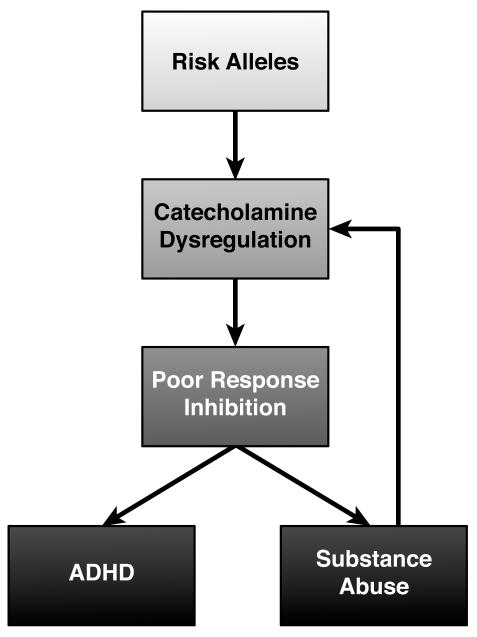Figure 2.
This hypothetical model graphically represents the concept that poor response inhibition, mediated by genetically-determined alterations in forebrain catecholamine transmission, is a risk factor for both ADHD and substance abuse. The abuse of illicit substances is also an environmental risk factor that produces further adaptations in catecholamine systems, leading to increasing impairments in response inhibition.

